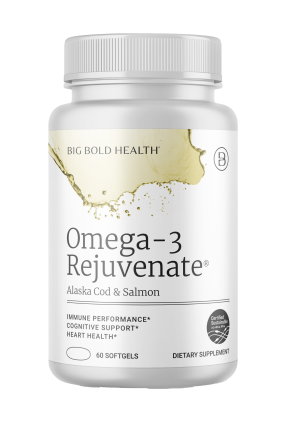I recently returned from a two-week tour of Scotland. It was truly a remarkable trip to a beautiful country with a rich history. I’d like to share some medical perspectives gleaned from my trip.
Scotland is cold. Not in the same way as, say, Bismarck, North Dakota, but it’s damp and raw. The weather is changeable throughout the year; for end of April/early May I packed a range of clothes, including rain jacket, heavy wool Icelandic sweater, long underwear, scarf, waterproof gloves and hat and rain pants. Luckily, it never deluged, but it rained a little, and once atop windblown Edinburgh castle I spotted snowflakes wafting down. I was grateful for the long underwear on some long hikes.
The locals considered it remarkable good luck that we had enjoyed such a spot of “great” weather; when the temperature hit 60 a lot of the locals donned shorts and T-shirts. One windy day when the sun peeked out I watched as Scots jumped into their tiny sailboats and darted among the piling of the bridges at the Firth of Forth. Bicyclists, some with heavy packs and panniers, wore summer bike shorts and light jerseys as they plowed up steep inclines, braving headwinds. They’re emulating their forebears, whose Scottish regiments maintained fidelity to kilts even in the trenches of WWI. The practice continued until WW2, but was eventually abandoned as impractical.
The water is cold here. There are picturesque freshwater and saltwater beaches, but I looked up the max water temperature in August and it was a frigid 55°, and probably colder in snow-fed streams and lochs. Nevertheless, “wild swimming” is a thing, Some watering holes are famous for cold water swimmers. Once, when hitchhiking through Scotland at the age of 18, I was too broke to stay in a B&B with a shower, so I availed myself of a frigid dip with a bar of soap in a mountain stream—but not before fortifying myself with a strong dark ale at a country pub (where the locals were speaking Gaelic).
The Scots are by and large a hearty folk. They had to be to endure the hardships of life in the Highlands, where, as of 1943, only one croft (community) in a hundred had electricity. The chilly islands of the Hebrides are especially remote and windblown. There’s archaeological evidence that Bronze Age communities date back 5,000 years. The Clava Cairns which we visited, are like Scotland’s Stonehenge, constructed around 2,000 BC.
Historically, there was constant threat of attack by rival clans, or by the English redcoats, and famines occurred with regularity. People lived in thatched hut dwellings fashioned of stone, roughly hewn branches, and walled with peat, which was also a fuel, since the moors were bereft of trees. Hand-milled barley and oats were a staple, supplemented with fish and game; sheep and cattle provided meat and dairy.
But protein was often in short supply, so much so that we were told that young Highlanders recruited into the military in the 18th century were sickened when first issued a generous meat ration. During scarcity, animals were bled to enrich oat and barley meal—the origins of “black pudding” which is an accompaniment to traditional Scottish breakfasts. Haggis developed as an admixture of organ meat with grain acting as a kind of a “Hamburger Helper” extender.
Hence, Scots, like Native Americans and other groups that endured privation for centuries, have inherited “thrifty genes” that render them vulnerable to the ravages of modern diets and sedentary lifestyles. I observed a surprising amount of obesity in Scotland.
Indeed, a government survey notes, “International comparisons indicate that Scotland has above average levels of adult overweight and obesity.” Scottish women (but not men) exceed rates of obesity relative to England, Wales and Ireland—29.3%.
They’re still doing better than Americans; 64.8% of Scots are overweight or obese whereas the U.S. rate is 68.6%.
Everywhere there are sweet shops. “High tea” is accompanied by towering displays of tempting pastries. “Chips” (French fries) are a ubiquitous accompaniment to meals. As a result there are government campaigns to combat overweight via diet and exercise. The makers of Irn-Bru, Scotland’s favorite soft drink, recently bowed to pressure and reduced its sugar content by half. Devotees still insist on the original.
Therein lies a cautionary tale for Americans, a high percentage of whom are of Scottish descent—8.3% or 25-30 million. Wikipedia reports:
“Large-scale emigration from Scotland to America began in the 1700s after the Battle of Culloden, when the Clan structures were broken up. Anti-Catholic persecution and the Highland Clearances also obliged many Scottish Gaels to emigrate. The Scots went in search of a better life and settled in the thirteen colonies, mainly around South Carolina and Virginia.”
Many subsequently migrated to the Appalachians whose landscape was reminiscent of their native Scotland. Is it mere coincidence that America’s highest rates of obesity occur among the white population of Kentucky, Tennessee, Alabama, Mississippi, the Carolinas and West Virginia?
Gluten-free is a big thing in Scotland, although only 41% of people with the condition are diagnosed. It’s on the rise: “Scientists have found coeliac disease affects six times more children living in Scotland now than it did in 1990.” It may be that, as in the U.S., ultra-processed diets and environmental chemicals or novel GI bugs are responsible.
Glaswegians are prone to saying: “Naebody cares aboot yer accent as long as yer Scotch is guid!”
Strangely, for the home of over 150 legendary whiskey distilleries, drinking seems to be becoming somewhat passé in Scotland. It’s by no means disappearing, with raucous watering holes resounding to Highland tunes mixed with modern hits, but a Scottish government report confirms:
“The prevalence of hazardous or harmful levels of weekly alcohol consumption has declined steadily since 2003, from 34% (2003) to 23% (2021). The mean number of units of alcohol consumed per week by adult drinkers has also declined since 2003, from 16.1 (2003) to 11.3 (2021).”
It’s probably the consequence of social media which has displaced the pub as the social nexus of communities; or maybe it’s just the rising popularity of cannabis. Covid lockdowns have only accelerated the trend of retreat from traditional drinking establishments.
Scots are big hikers. Driving the route of the 96-mile West Highland Way we saw intrepid walkers with heavy packs braving freezing rain. The segments range from 9 to 15 miles per day and involve steep ascents, taking eight days. We saw footsore people at the endpoint, Ft. William.
Scots have a love-hate relationship with their National Health Service. They extoll the benefits of free health care, accessible to all; on the other hand, they curse the wait times for specialists or for elective surgeries, which can last weeks or even months.
Scotland boasts a proud medical tradition. Edinburgh medical school is rated #1 in the U.K. and is among the foremost in the world; Graduates of the medical school have founded medical schools and universities all over the world including five out of the seven U.S. Ivy League medical schools.
The Royal College of Physicians of Edinburgh was founded in 1681. They have a great medical museum full of unusual anatomical specimens. The demand for fresh corpses for anatomy study was so great in the 18th century that it resulted in locked iron grates being placed over burial plots to deter grave-robbers.
Unlike in the U.S. where medical school lasts four years, it’s a six-year course of study—but you’re admitted after just two years of college prep. Famous alumni include Joseph Lister, who invented antiseptics, and Alexander Fleming, who discovered penicillin. Dolly the sheep was cloned in affiliation with the University of Edinburgh, and we saw her taxidermically immortalized at the National Museum of Scotland.
All in all, a great and informative trip—thanks for letting me take you along!







